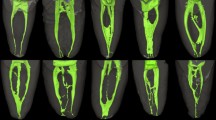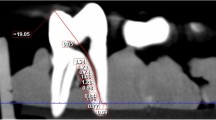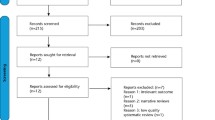Key Points
-
Describes the micro-anatomy of the apical terminus for a root canal system and different methods of measuring root canal system length.
-
Describes basic physics, current electricity and how teeth can function as capacitors.
-
Describes how this capacitor model represents a starting point upon which all apex locators are based.
Abstract
To effectively carry out root canal therapy, the clinician must accurately determine the apical limit of the root canal system as well as the position of the canal terminus. Its position can be estimated using a variety of techniques, including radiographs, tactile feedback from endodontic instruments and electronic apex locators. This article describes the micro-anatomy of the apical terminus, different methods of measuring root canal system length and how a tooth can function as an electrical capacitor. This capacitor model represents a starting point upon which all apex locators are based. An understanding of this model can help the practitioner to optimise the use of apex locators, understand their limitations and avoid errors that can occur.
Similar content being viewed by others
Log in or create a free account to read this content
Gain free access to this article, as well as selected content from this journal and more on nature.com
or
References
Chugal N . Clive J, Spangberg L . Endodontic infection: some biologic and treatment factors associated with outcome. Oral Surg Oral Med Oral Pathol Oral Radiol Endod 2003; 96: 81–90.
Heling B, Gorfil C, Slutzky H et al. Endodontic failure caused by inadequate restorative procedures: review and treatment recommendations. J Prosthet Dent 2002; 87: 674–678.
Ng Y-L, Mann V, Rahbaran S, Lewsey J, Gulabivala K . Outcome of primary root canal treatment: systematic review of the literature - Part 2. Influence of clinical factors. Int Endod J 2008; 41: 6–31.
Kuttler Y . Microscopic investigation of root apexes. J Am Dent Assoc 1955; 50: 544–552.
Green D . Stereomicroscopic study of 700 root apices of maxillofacial and mandibular posterior teeth. Oral Surg Oral Med Oral Path 1960; 13: 728–733.
Gordon M P J, Chandler N P . Electronic apex locators. Int Endod J 2004; 37: 425–437.
Malueg L, Wilcox L, Johnson W . Examination of external apical root resorption with scanning electron microscopy. Oral Surg Oral Med Oral Pathol Oral Radiol Endod 1996; 82: 89–93.
Ponce E H, Fernandez J A V . The cemento-dentinal-canal junction, the apical foramen, and the apical constriction: evaluation by optical microscopy. J Endod 2003; 29: 214–219.
Kuttler Y . A precision and biologic root canal filling technique. J Am Dent Assoc 1958; 56: 38–50.
Ricucci D Apical limit of root canal instrumentation and obturation, part 1. Literature review. Int Endod J 1998; 31: 384–393.
Nekoofar M H, Ghandi M M, Hayes S J, Dummer P M H . The fundamental operating principles of electronic root canal length measuring devices. Int Endod J 2006; 39: 595–609.
Gutierrez J H, Aguayo P . Apical foraminal openings in human teeth. Number and location. Oral Surg Oral Med Oral Pathol Oral Radiol Endod 1995; 79: 769–777.
Katz A, Tamse A, Kaufman A Y . Tooth length determination: a review. Oral Surg Oral Med Oral Pathol 1991; 72: 328–342.
Dummer P M, McGinn J H, Rees D G . The position and topography of the apical canal constriction and apical foramen. Int Endod J 1984; 17: 192–198.
Seidberg B H, Alibrandi B V, Fine H, Logue B . Clinical investigation of measuring working lengths of root canals with an electronic device and with digital-tactile sense. J Am Dent Assoc 1975; 90: 379–387.
Stabholtz A, Rostein I, Torabinejad M . Effect of preflaring on tactile detection of the apical constriction. J Endod 1995; 21: 92–94.
Stock C . Endodontics – position of the apical seal. Br Dent J 1994; 176: 329.
Chandler N P, Bloxham G P . Effect of gloves on tactile discrimination using an endodontic model. Int Endod J 1990; 23: 97–99.
Sheaffer J, Eleazer P, Scheetz J, Clark S, Farman A . Endodontic measurement accuracy and perceived radiographic quality: effects of film speed and density. Oral Surg Oral Med Oral Pathol Oral Radiol Endod 2003; 96: 441–448.
Martinez-Lozano M, Forner-Navarro L, Sanchez-Cortes J, Llena-Puy C . Methodological considerations in the determination of working length. Int Endod J 2001; 34: 371–376.
Green D . A stereomicroscopic study of the root apices of 400 maxillary and mandibular anterior teeth. Oral Surg Oral Med Oral Pathol 1956; 9: 1224–1232.
Cox V S, Brown CE Jr, Bricker S L, Newton C W . Radiographic interpretation of endodontic file length. Oral Surg Oral Med Oral Pathol 1991; 72: 340–344.
Rosenberg D B . The paper point technique, Part 1. Dent Today 2003; 22: 62–67.
Rosenberg D B . The paper point technique, Part 2. Dent Today 2003; 22: 80–86.
Robinson S, Brunton P . Endodontic length determination: what lengths should we go to? Dent Update 2008; 35: 678–683.
Meredith N, Gulabivala K . Electrical impedance measurement of root canal length. Endod Dent Traumatol 1997; 13: 126–131.
Author information
Authors and Affiliations
Corresponding author
Additional information
Refereed Paper
Rights and permissions
About this article
Cite this article
Ali, R., Okechukwu, N., Brunton, P. et al. An overview of electronic apex locators: part 1. Br Dent J 214, 155–158 (2013). https://doi.org/10.1038/sj.bdj.2013.161
Accepted:
Published:
Issue date:
DOI: https://doi.org/10.1038/sj.bdj.2013.161



